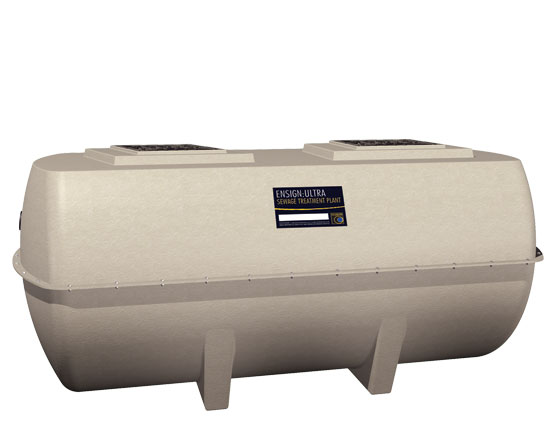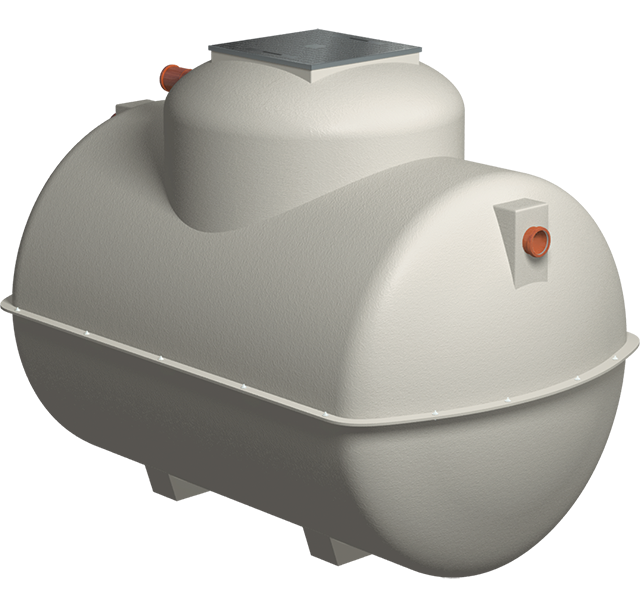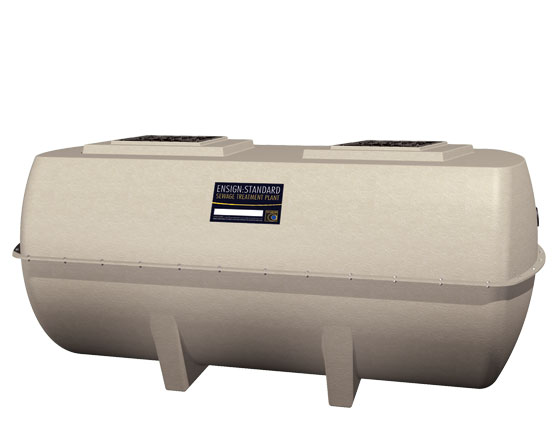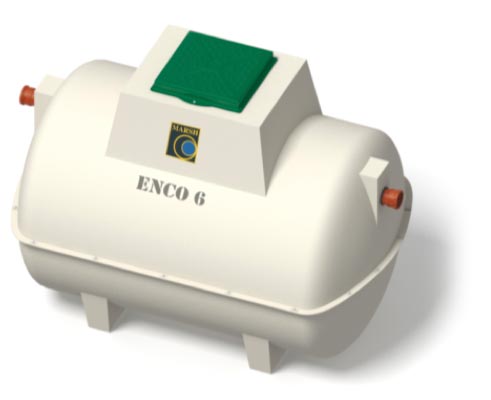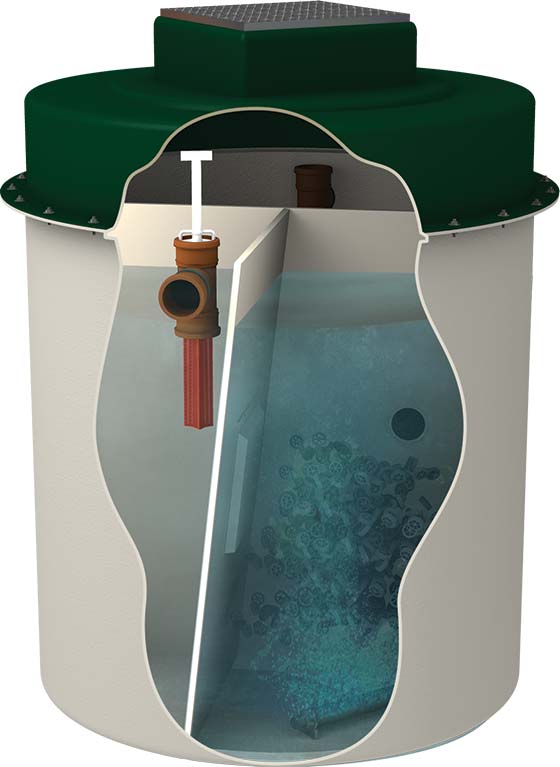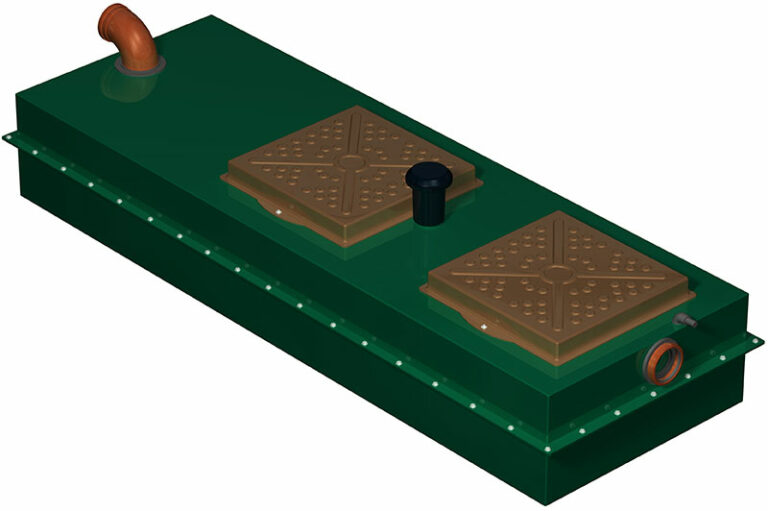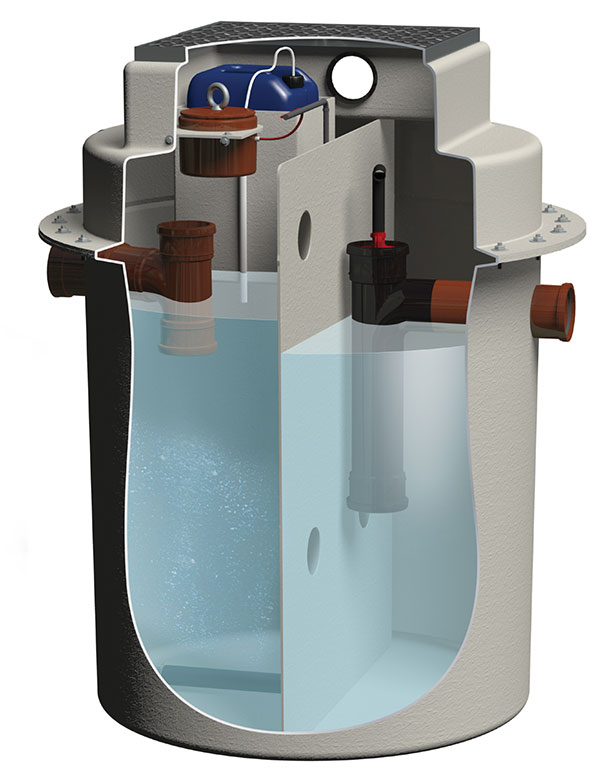Intensive biological processing for off-mains wastewater
Package Sewage Treatment Plants (or PSTP’s) are often a suitable option where groundwater in the surrounding environment is vulnerable, drainage field percolation values are restrictive, or direct discharge to a drainage field/watercourse or surface water sewer is the prefered discharge method.
Sewage Treatment Plants Guidance notes:
- PSTP’s should be sized using the latest version of British Water Flows & Loads which provides detailed information on sewage production figures and sizing calculations
- Regulatory authorities for the control of pollution in the UK normally require treatment plants conforming to BSEN12566:3 to be demonstrated as capable of producing a minimum effluent discharge quality of 20:30:20 (Biochemical Oxygen Demand; Suspended Solids: Ammoniacal Nitrogen in mg/ltr), although in certain areas more stringent site-specific qualities may be required
- No surface water should enter the system as this can reduce the system’s capacity and cause solids to be flushed out which may prematurely block drainage field or cause pollution
- As with septic tanks, sludge should be removed annually or in line with manufacturers instructions
The objective of sewage treatment plants
In the UK, water is a key resource, especially in the east south of the country. Water supply is limited while both water volume demand and drought frequency are increasing. Sewage treatment plants play a massive role in recycling water to ensure supply continues to meet demand. Sewage treatment plants remove contaminants from household sewage water and wastewater. It requires biological and often chemical processes to remove pollutants.
The aim is to produce effluent, environmentally safe sewage water and biosolids, suitable for reuse or disposal. The water from mains which is used by houses ( sinks, kitchens, showers, baths, toilets), farming, hospitals, manufacturing, industrial and commercial sites, is of a lower quality due to the introduction of contaminating constituents.
Pollutants like organic wastes, bacteria, suspended solids, phosphates and nitrates are pollutants that must be removed. When sewage arrives and leaves at sewage treatment plants.
How is sewage defined?
Biochemical Oxygen Demand (BOD), is one of the main pollutants. Sewage with a high BOD has increased pollution potential when discharged into the water since it robs the water of oxygen. It is a danger to aquatic animals and fish that need oxygen to breathe. Domestic sewage usually contains between 250 and 400mg/l BOD which is far too high for safe use and requires domestic sewage treatment to contain no more than 20mg/l in minimising pollution potential.
In the UK, sensitive sites might be requested to achieve lower levels than 20mg/l. Suspended Solids are small particles that do not settle out but float in sewage water. For the UK, the normal discharge standard is 30mg/l for SS. Suspended Solids are reduced by biological and settlement treatment stages.
Sewage treatment plants use both these processes for different stages. Some plants use two, one for the beginning and the other in the final settlement tank. Extended aeration and activated sludge systems only use one stage in the final clarification chamber. When domestic sewage arrives at sewage treatment plants the suspended solids concentration averages at 300mg/l.
This is reduced with domestic sewage treatment to 30mg/l, at most, to be discharged to watercourses. With the possibility of BOD associated with SS, the reduced SS leads to a decrease in BOD as well. When the water leaves the plant at 30mg/l it appears clear but with higher SS concentration the water looks cloudy.
Ammoniacal Nitrogen comes mainly from urine in domestic water. Nitrogen is a plant nutrient and when the water leaving sewage water plants contains too much nitrogen, it causes explosive algae and plant growth in ponds, lakes and watercourses. It also results in death to aquatic life and fish due to the massive loss of oxygen in the water which is robbed by the plant infestation. It is a normal requirement that sewage plants remove nitrogen from sewage which is a process called Nitrogen Cycle.
Recycling domestic sewage
The recycling of domestic sewage is possible with domestic sewage treatment as a means to recycle water. Recycling will also reduce the cost of industrial sewage treatment. It is a simple process, however, you need to make a distinction between blackwater and greywater. Greywater that comes from sinks, washing machines, baths and showers is not dangerous even though it may have contaminants and particles.
Blackwater is a sewage waste that comes from dishwashers and toilets. It contains faeces, human bodily fluids and food particles that are hazardous to both humans and soil when released into the ground. It is normal for UK residents and organisations to recycle greywater but blackwater is disposed and treated at treatment plants.
Blackwater is a far more complex process that requires special wastewater treatment products than greywater treatment. However, despite the complexity, it is often recycled too. With between 50 to 80% of household wastewater referred to as greywater it is easier to treat as it contains no disease-causing pathogens and bacteria. When recycled properly, it can save up to 70 litres of water per person daily.
It is worth investing in when considering how much savings can be achieved in water tariffs. Even when treated, it should not be used as drinking water but it can be used to water your garden, wash clothes and flush toilets. There are numerous ways to treat greywater that range from complex automated systems to simple methods, depending on the purpose of the water.
Advantages of wastewater treatment products for home use
Wastewater management systems for home use ensure that you always have clean water and freedom to use water as needed. It gives you the added advantage of not worrying about water wastage since it will be cleaned and reused again. With increasing water crises, the perceived scarcity of clean water is not troublesome, especially in rural areas and farms where people increasingly need clean water for animal care and farming needs.
Wastewater treatment products allow everyone to utilise wastewater repeatedly. Modern systems rid potential diseases by filtering contaminants before the wastewater leaves a tank. It is a low-cost option to recycle wastewater with a system lasting up to 15 years. If the odour is a complaint, homeowners will find that modern wastewater systems do not eject odours. It does not require constant de-sludging with fewer blockage with no solids that contaminate drainage fields and groundwater.
Water is a precious commodity which the world cannot do without. With the reuse of water, the hygienic conditions and quality of life significantly improve. Plants and animals flourish while humans pay less and save more when installing their own systems. At the same time, everybody that recycles and treat used water is automatically contributing to preserving the natural environment. As a natural resource, it should always be managed in the best way in maintaining sustainable development, protect the environment and improve quality of life. The standard of living in a world with clean reused water increases by securing a safer environment to forthcoming generations.



